Photographs: Peter Caton/Greenpeace
It's still not too late to save one of nature's marvels, ace photographer Peter Caton tells Vaihayasi Pande Daniel
What led to your interest in the Sundarbans? And how did you hear it was sinking?
I work as a freelance photographer and one of my major clients is Greenpeace International. The Sundarbans came to my attention when I was first asked to shoot there for a Greenpeace campaign three years ago. I have returned there for Greenpeace and other environmental organisations since then to record the ongoing sinking. It is a vitally important area of land that acts as a first line of defense against cyclones that funnel up the Bay of Bengal. For example without the Sundarbans, Kolkata would be under an even more severe threat from flooding. It is also the haven for many tigers as well as numerous unique flora and fauna. To give up and let the Sundarbans disappear would be a loss for India's great natural diversity and also its heritage.
'It was the most challenging place'
Image: Ajit Das. Ghoramara Island, SundarbansPhotographs: Peter Caton/Greenpeace
It is a difficult place to access. How did go about working there? What were the difficulties you faced?
It is probably the most challenging place I know to take photographs. I was often waist deep in thick mud trying to shoot from the riverbanks. When I was last in the Indian Sundarbans in June 2009, the monsoon rains that cool India down were delayed and the heat and humidity was like nothing I have experienced before in Asia or Africa. It was ironic that we were working on a story about climate change and the heat was at an all time high. I spent a lot of my days submerged in water shooting the flooding. This was a relief from the heat and my team would look at me with envy!
Shooting Sunderbans
Image: Bipra Mondal. Satjelia Island, SundarbansPhotographs: Peter Caton
I have shot in India for over four years living in hotels and enjoying the freedom we now have by using digital equipment. I have traveled around huge areas of India yet there is still so much more to see. I love shooting in areas where I hope my images can help or inform people. I am most stimulated when shooting in the most deprived areas of India like rural Uttar Pradesh, Andhra Pradesh, Jharkhand and Bihar. Usually these are the places where we meet the most dedicated and highly motivated field staff. India has so many passionate social/field workers that really care passionately about their country and want to make it a better place and alleviate suffering. It is an honor to work alongside some of these guys. I have met some of the most incredible people in some of the most deprived places.
Working on leprosy patients
Image: Lalmohan Mondal. Ghoramara Island, SundarbansPhotographs: Peter Caton/Greenpeace
Tell us a little about your leprosy exhibition. Where did you shoot those pictures? How tough was it?
Tackling leprosy is one of the great successes in India. The way India has reduced the prevalence of leprosy is a truly remarkable feat. I began working on the disease in 1999 with influential people such as Baba Amte and also in the world's largest leprosy hospital near Vellore, Tamil Nadu.
The situation at that time was a make or break phase in the fight to eradicate leprosy. The drug MDT was widely available but Indians needed to come forward early before the disease attacked and desensitized limbs. The educational blitz in the 10 years since then has been nothing short of miraculous in my opinion. There is still a long way to go but it is definitely heading in the right direction. Bolangir in Orissa used to be a hotbed for leprosy sufferers but now its virtually vanished from the area. When I returned six years on, I was amazed at the progress.
India, China hold the key
Image: Nitai Manna .Sagar Island, SundarbansPhotographs: Peter Caton/Greenpeace
Tell us a little bit about yourself and how your photography took you to the subcontinent.
All photographers in my line of work have special relationships with certain regions/ countries and mine is South Asia. I could spend the rest of my career working in India and still uncover new and interesting work. It is a real affinity with the people of India that hopefully is present in my work. I believe it is a special relationship that I have forged over the years. I also believe its a very important country at this present time. In my opinion, India along with China holds the key to the future of the planet. So it is not a country I want to ignore.
Shooting Sunderbans
Image: Shukdev Das. Ghoramara Island, SundarbansPhotographs: Peter Caton/Greenpeace
Shukdev Das sits on what remains of his land on Ghoramara Island, one of the most vulnerable islands in the Indian Sundarbans. Over the past 40 years, almost half of it has become submerged.
Shooting Sunderbans
Image: Shyamapada Mondal.Satjelia Island, SundarbansPhotographs: Peter Caton/Greenpeace
"Ater Cyclone Aila, I cannot earn anything now. I had three ponds to cultivate prawn and fish, but they were also destroyed. I have no income," said Shyamapada Mondal.
Shooting Sunderbans
Image: Sovarani Koyal.Satjelia Island, Sundarbans,Photographs: Peter Caton/Greenpeace
Sovarani wades through floodwater filthy with sewage and debris in front of her home during high tide, trying in vain to stop it from washing into her house.

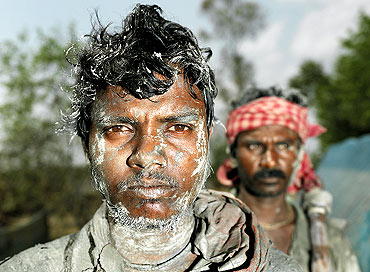

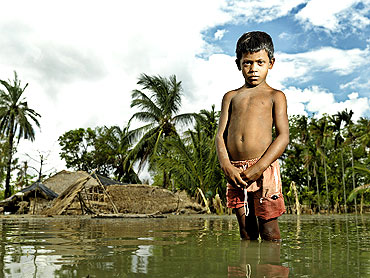
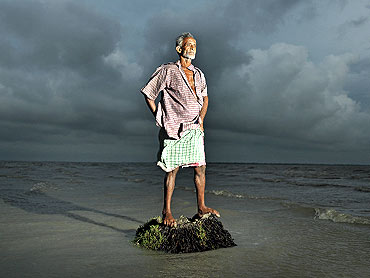
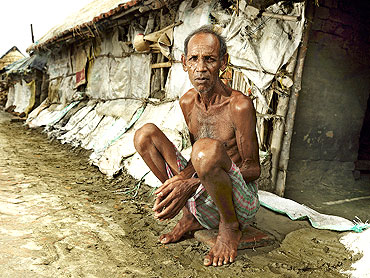
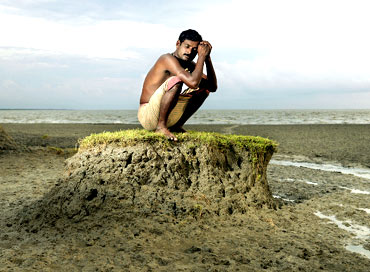


article